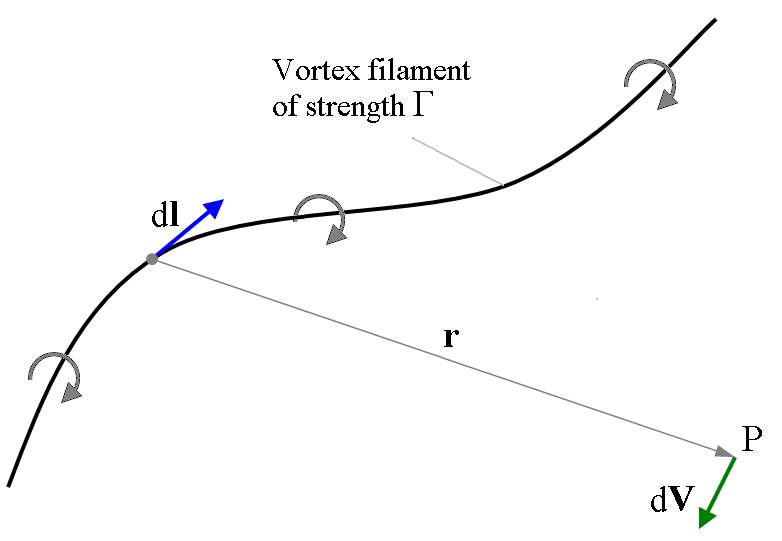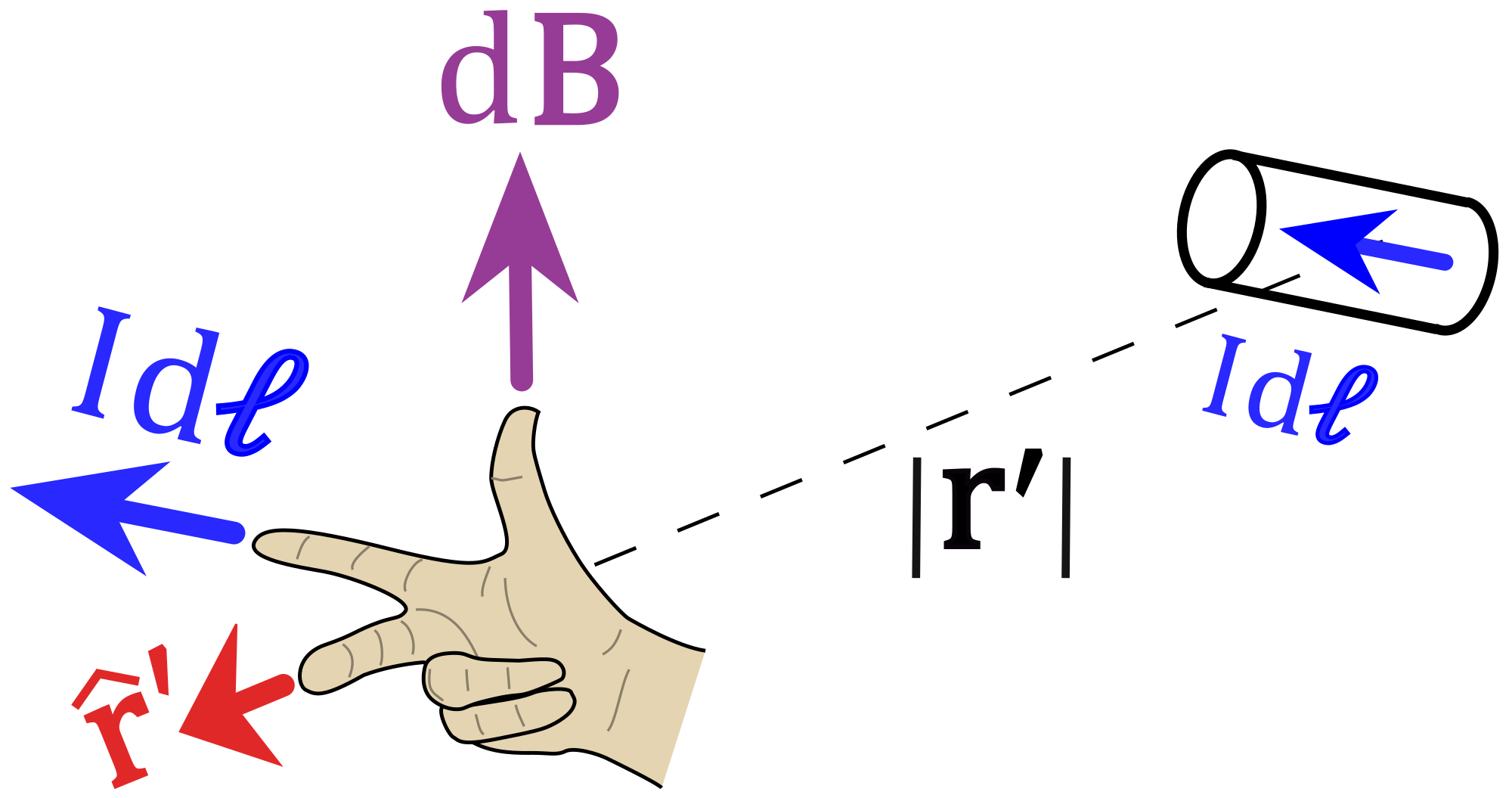Biot Savart Law and Its Applications with Example
The Biot Savart Law states that it is a mathematical expression which illustrates the magnetic field produced by a stable electric current in the particular electromagnetism of physics. It tells the magnetic field toward the magnitude, length, direction, as well as closeness of the electric current. This law is basic to magnetostatics and plays an essential role related to the Coulomb’s law in electrostatics. Whenever magneto statics do not apply, then this law must be changed by the equation of Jefimenko’s. This law is applicable in the magnetostatic estimate, & is reliable by both Gauss’s (magnetism) and Ampere’s (circuital) law. The two physicists from French namely “Jean Baptiste Biot” & “Felix Savart” implemented an exact expression intended for magnetic flux density at a position close to a current carrying conductor in the year 1820. Screening a magnetic compass needle deflection, the two scientists completed that every current component estimates a magnetic field in the space (S).
What is Biot Savart Law?
A conductor which carries current (I) with the length (dl), is a basic magnetic field source. The power on one more related conductor can be expressed easily in terms of the magnetic field (dB) due to the primary. The magnetic field dB dependence on the ‘I’ current, dimension as well as direction of the length dl & on distance ‘r’ was primarily estimated by Biot & Savart.

Once from end to end observations as well as calculations they derived an expression, that includes the density of magnetic flux (dB), is directly proportional to the element length (dl), the flow of current (I), the sine of the angle θ among the flow of current direction and the vector combining a given position of the field, with the current component is inversely proportional to the square of the distance (r) of the specified point from the current element. This is the Biot Savart law statement.

Thus, dB is proportional to I dl sinθ/ r2 or, it can be written as dB = k Idl sinθ / r2
dH = μ0 μr/4п x Idl Sin θ/ r2
dH = k x Idl Sin θ/ r2 (Where k= μ0 μr/4п )
dH is proportional to Idl Sin θ/ r2
Here, k is a constant, thus the final Biot-Savart law expression is
dB = μ0 μr/4п x Idl Sin θ/ r2
Biot Savart Law Mathematical Representation
Let us examine a long current carrying (I) wire and also an end P in the space. The current carrying wire is shown in the picture with a particular color. Let us too think a small length (dl) of the wire with the ‘r’ distance from the ‘P’ end as shown. Here, a distance vector (r) will make an angle θ by the route of current in the tiny section of the wire.
If you aim to imagine the situation, one can simply know the density of magnetic field at the end of P point because of tiny length ‘dl’ of the wire which is directly proportional to current carried with this section of the wire.
When the current throughout the tiny length of wire is similar to the current carried by the total wire itself that can be written as
dB ∝ I
It is also very normal to imagine that the density of magnetic field at that ‘P’ end due to that tiny length of wire is inversely proportional to the square of the direct distance from P end toward the middle of dl. So this can be written as,
dB ∝ 1/ r2
Finally, the density of the magnetic field at the end of ‘P’ point due to that tiny section of wire is directly proportional to the real length of the tiny wire. The angle θ among the distance vector ‘r’ as well as a flow of current direction throughout this tiny section of the dl wire, the component of ‘dl’ straight facing perpendicular toward the end P is dlSinθ.
Thus, dB ∝ dl Sin θ
At the present, uniting these three declarations, we can write as,
dB ∝ I.dl .Sin θ/ r2
The above biot savart law equation is the basic type of Biot Savart’s Law. At present, substituting the constant (K) value in the above expression, we can get the following expression.
dB = k Idl sinθ / r2
dB = μ0 μr/4п x Idl Sin θ/ r2
Here, μ0 used in the constant k is complete permeability of vacuum and the value of μ0 is 4π10-7 Wb/A-m in SI units, and μr is relative permeability of the medium.
At present, the B (flux density) at the ‘P’ end due to the whole length of the current carrying wire can be signified as,
B = ∫dB = ∫μ0 μr/4п x Idl Sin θ/ r2 = I μ0 μr/4п ∫ Sin θ/ r2 dl
If the distance ‘D’ is perpendicular to the endpoint ‘P’ from the wire, then it can be written as
r Sin θ = D => r = D/ Sin θ
Thus, the B (flux density) at end ‘P’ can be rewritten as,
B = I μ0 μr/4п ∫ Sin θ/ r2 dl = I μ0 μr/4п ∫ Sin3θ/ D2 dl
Again, Cotθ = l/D then, l = Dcotθ
Based on the above figure
Thus, dl = -D csc2θ dθ
Lastly, the equation of flux density can be written as
B = I μ0 μr/4п ∫ Sin3θ/ D2 (-D csc2θ dθ)
B = -I μ0 μr/4пD ∫ Sin3θ csc2θ dθ => –I μ0 μr/4пD ∫ Sinθ dθ
This θ angle depends on the length of the current carrying wire as well as the point of the P. For a specific incomplete length of the current-carrying wire, the θ angle specified in the above figure changes from angle θ1 to angle θ2. Therefore, magnetic flux density at P end due to the whole length of the wire can be written as,
B = -I μ0 μr/4пD
-I μ0 μr/4пD [-Cos ] = I μ0 μr/4пD [Cos ]
Let’s consider the current carrying wire is much longer then the angle will change from θ1 to θ2 (0-π). Substituting these values in the above equation of Biot Savart law, then we can get the following final biot savart law derivation.
B = I μ0 μr/4пD [Cos ] = I μ0 μr/4пD [1 ] = I μ0 μr/2пD
Biot Savart Law Example
The round coil is of 10 turns as well as radius 1m. If a flow of current through it is 5A, then determine the field in the coil from a 2m distance.
- Number of turns n= 10
- Current 5A
- Length= 2m
- Radius = 1m
- The biot savart law statement is given by,
- B = (μo / 4π) × (2πnI / r)
- Then, substitute the above values in the above equation
- B = (μo / 4π) × (2 × π × 10 × 5 / 1) = 314.16 × 10-7 T
Biot Savart Law Applications
The applications of Biot Savart Law include the following
- This law can be used for calculating magnetic reactions even on the level of molecular or atomic.
- It can be used in the theory of aerodynamic for determining the velocity encouraged with vortex lines.
Thus, this is all about biot savart law. From the above information finally, we can conclude that the magnetic field because of a current element can be calculated by using this law. And, the magnetic field because of some configurations such as a circular coil, a disk, a line segment, was determined by using this law. What is the function of biot savart law?




